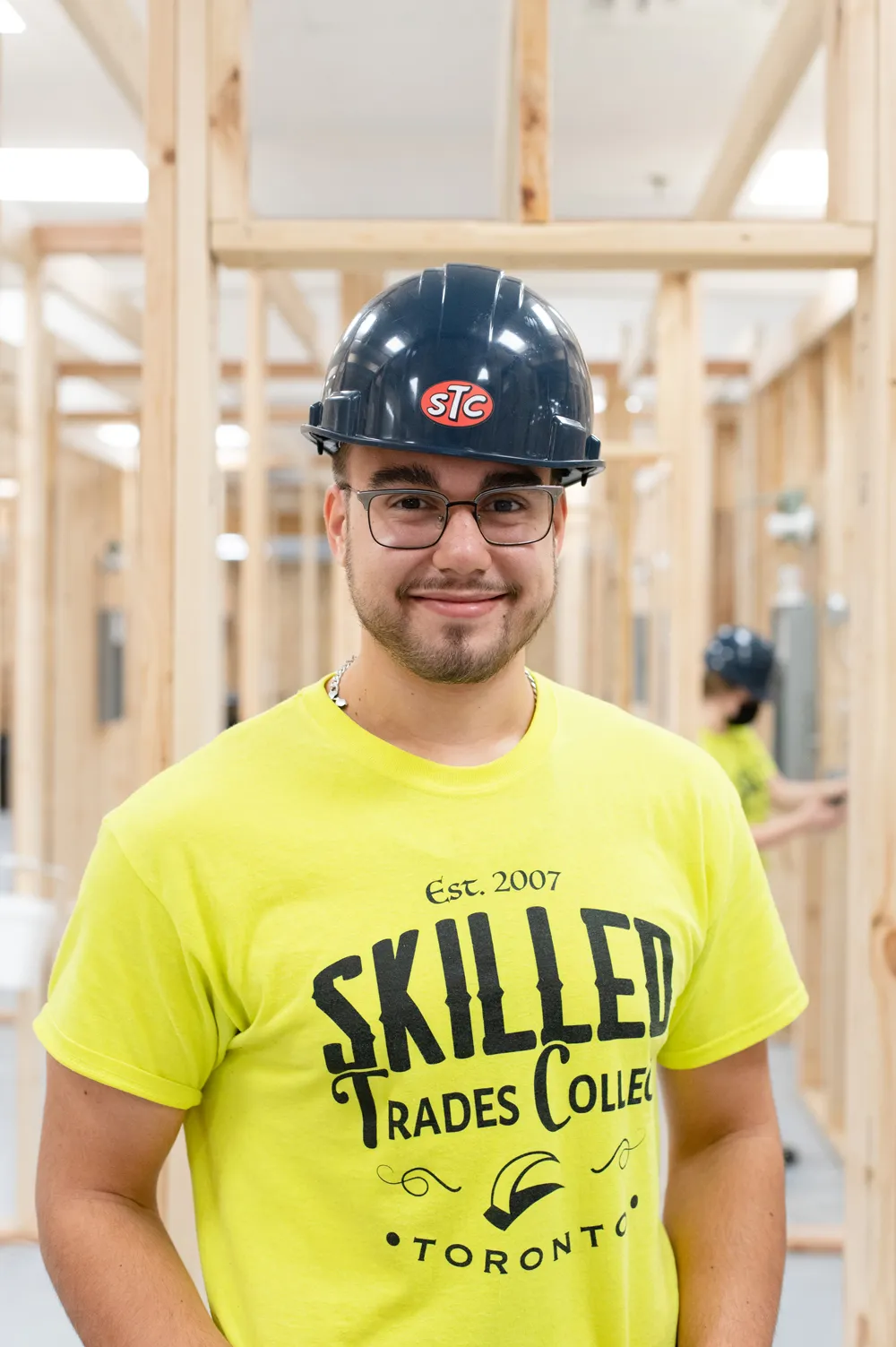The Risks and Rewards of Working as an Electrician
%20(1).webp)
Published On
10-01-2023

Becoming a pipefitter is a good way to start a career in the trades industry. Pipefitters—also known as steamfitters—organize, assemble, create, repair, or maintain piping systems. These systems carry water, chemicals, acids, and even gasses across manufacturing or industrial buildings, so pipefitters must ensure the pipes can withstand high pressures.
Although often associated or mistaken with plumbing, plumbers usually work on low-pressure piping systems. Meanwhile, pipefitters work in welding—and this skillset helps them manipulate and prepare equipment for installation.
If you’re wanting to learn how to become a pipefitter in Canada, you need to go through trade school training and gain practical experience through apprenticeships.
Most (if not all) apprenticeships offer students the chance to earn wages during training, which increases as trainees develop new skills. Have we piqued your interest? Read more to learn how to become a pipefitter below.
Becoming a pipefitter is a great career choice for those who want a fulfilling and financially enriching job. Tradespeople who work in this sector often handle alloy metals and weld them to fit specifications for industrial use. Some of the types of work that you might perform on the job include:
Due to the nature of their duties, however, there may be times when pipefitters work under stress, such as when gas and oil leaks occur. Nevertheless, many people still find their jobs enriching and are satisfied with their employment.
Additionally, the median salary for a pipefitter in Canada is around $69,290 annually or over $35.54 per hour. Entry-level positions start at a little over $54,660 per year, while the most experienced pipefitters earn as much as $86,010 per year.
Employment opportunities will continue to grow over the next couple of years, so you can be sure that pursuing a career as a pipefitter will reap you great rewards.
If you have entered “how to become a pipefitter” more than once in your search bar, then it’s safe to assume you’re ready to take the plunge toward this rewarding career. Here are some of the steps that could help you get started:

Most trades jobs require at least a high school diploma (or equivalent), and pipefitter positions are no different. Many also require a technical or vocational degree. If you need extra credentials, explore online options, local education centres, or community colleges that may help you fulfill the necessary requirements.
Trades schools offer courses covering system designs, safety, tool use, and other important subjects that will help future pipefitters learn how to successfully handle the necessary processes. When researching how to become a pipefitter, it’s important to look into the required apprenticeship hours and the certifications you’d need because it varies per region in Canada.
Consider factors such as tuition fees and financial aid when searching for the right school for you as well.
Before you can get your trade certification or Red Seal endorsement, you must first finish all the required hours during your apprenticeship. Look for relevant apprenticeships in the area where you’d like to work as a pipefitter and explore how the programs can support you in your endeavours.
Some schools, such as Skilled Trades College, are designed to give their students the right balance of theoretical knowledge and hands-on training to mould them into becoming successful apprentices.
As mentioned before, apprenticeship training hours vary across the country. But you can expect to put in a minimum of 6,000 hours of on-the-job training, technical training, and a final certificate exam over the course of four years. During your apprenticeship, think about whether you want to focus on a particular specialty within the pipefitting sector.
After finishing exams and your apprenticeship, you also need to take a certification exam to become a pipefitter. Once successfully completed, you’ll receive a licence and be fit to work independently.
To be eligible for trade certification, you need to have a combination of over five years of work experience in the trade and several high school, college, or industry courses in steam fitting, pipefitting, or plumbing and system installations courses. Of course, the eligibility requirements may vary depending on the location where you wish to work.
One certification that benefits tradespeople is the Red Seal certification. Essentially, this tells prospective employers that you have the necessary knowledge and skills to practice your trade across Canada.
After this, you can now search for jobs as a certified pipefitter!

When working on becoming a pipefitter, look into the working conditions, the minimum requirements, and the technical training needed to be successful in this trade. When you undergo an apprenticeship, you’ll attend both classroom studies and on-the-job training under the supervision of an employer, or a certified steamfitter/pipefitter. During training, you can earn while you learn and even increase your wages as you progress or upskill.
Another pathway you can pursue in becoming a certified pipefitter is to complete pre-apprenticeship training. While it’s not mandatory, employers are keen on hiring apprentices who have extensive skills, knowledge, and safety training because it saves the company effort and money.
When learning how to become a pipefitter, you’ll see that this trade is a great option for those who want a fulfilling, long-lasting, and financially stable career.
Skilled Trades College is an industry-recognized institution that offers pre-apprenticeship programs to help you get started in your prospective trade. The Plumber Pre-Apprentice Program at Skilled Trades College of Canada was designed specifically to provide students with an ideal balance of theoretical and hands-on training to prepare them for their apprenticeships.
If you need more information or are interested in another in-demand trade, feel free to contact us!
9,281+
LIVES CHANGED

12,481+
WIRES PULLED

85,382+
2X4'S CUT

9,756+
PIPES LAYED

9,281+
LIVES CHANGED

12,481+
WIRES PULLED

85,382+
2X4'S CUT

9,756+
PIPES LAYED

9,281+
LIVES CHANGED

12,481+
WIRES PULLED

85,382+
2X4'S CUT

9,756+
PIPES LAYED
